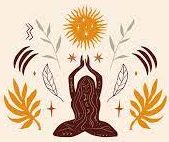List of God Chalisa – Click to open
- Shree Surya Chalisa and Surya Dev aarti – श्री सूर्य चालीसा और सूर्य देव की आरती
- Shree Batuk Bhairav Chalisa in Hindi – श्री बटुक भैरव चालीसा
- Shree Bhairav Chalisa or Shri Batuk Bhairav Chalisa in Hindi
- Shree Shani Chalisa-2 in Hindi – शनि चालीसा
- Shree Shani Chalisa – 1 in Hindi
- Shree Shiv Chalisa in Hindi – शिव चालीसा
- Shree Vishnu Chalisa in Hindi – विष्णु चालीसा
- Shree Ram Chalisa in Hindi – राम चालीसा
- Shree Krishna Chalisa in Hindi – कृष्ण चालीसा
- Shree Gopal Chalisa and Aarti in Hindi – गोपाल चालीसा
- Shree Ganesh Chalisa – Ganesh Chalisa lyrics in Hindi – गणेश चालीसा
- Shree Brahma Chalisa in Hindi – ब्रह्म चालीसा
- Shree Gayatri Chalisa in Hindi – गायत्री चालीसा
- Shree Mahalakshmi Chalisa and Ashtakam in Hindi – महालक्ष्मी चालीसा और अष्टकम
- Shree Lakshmi Chalisa in Hindi – लक्ष्मी चालीसा
- Shree Vindheshwari Chalisa in Hindi – विंध्येश्वरी चालीसा
- Shree Durga Chalisa in Hindi – दुर्गा चालीसा
- Shree Baba Gangaram Chalisa in Hindi – गंगाराम चालीसा
- Shree Pitar Chalisa – pitra chalisa in Hindi – पितृ चालीसा – पितर चालीसा
- Shree Ramdev Chalisa in Hindi – रामदेव चालीसा
- Shree Shyam Khaatu Chalisa in Hindi – खाटूश्याम चालीसा
- Shree Parashuram Chalisa in Hindi – परशुराम चालीसा
- Shree Mahaveer Teerthankar Chalisa in Hindi – महावीर तीर्थंकर चालीसा
- Shree Giriraj Chalisa in Hindi – गिरिराज चालीसा
- Shree Sai baba Chalisa in Hindi – साईबाबा चालीसा
- Shree Balaji Chalisa in Hindi – बालाजी चालीसा
- Shree Pretraj Chalisa in Hindi – प्रेतराज चालीसा
- Shri Jaharveer Goga Ji Chalisa in Hindi – जाहरवीर गोगाजी चालीसा
- Shree Gorakh Chalisa in Hindi – गोरख चालीसा
- Shree Ravidas Chalisa and Aarti in Hindi – रविदास चालीसा
- Shree Vishwakarma Chalisa in Hindi – विश्वकर्मा चालीसा
- Shree Navagrah Chalisa in Hindi – नवग्रह चालीसा
- Shree Rani Sati Chalisa in Hindi – रानी सती चालीसा
- Shree Lalita Chalisa in Hindi – ललिता चालीसा
- Shree Shakambhari Chalisa in Hindi – शाकंबरी चालीसा
- Shree Sharada Chalisa in Hindi – शारदा चालीसा
- Shree Narmada Chalisa in Hindi – नर्मदा चालीसा
- Shree Ganga Chalisa in Hindi – गंगा चालीसा
- Shree Bagalaamukhi Chalisa in Hindi – बगलामुखी चालीसा
- Shree Parvati Chalisa in Hindi – पार्वती चालीसा
- Shree Annapurna Chalisa in Hindi – अन्नपूर्णा चालीसा
- Shree Santoshi Maa Chalisa – संतोषी चालीसा
- Shree Vaishno Devi Chalisa in Hindi – वैष्णो चालीसा
- Shree Tulasi Chalisa in Hindi – तुलसी चालीसा
- Shree Radha Chalisa in Hindi – राधा चालीसा
- Shree Shitala Mata Chalisa and Aarti in Hindi – शीतला चालीसा
- Shree Mahaakaali Chalisa in Hindi – महाकाली चालीसा
- Shree Kali Chalisa in Hindi – काली चालीसा
- Shree Saraswati Chalisa in Hindi – सरस्वती चालीसा
- Tamil Hanuman Chalisa
- Hanuman Chalisa in Kannada Text
- Hanuman Chalisa in Telugu text – Hanuman Chalisa in Telugu lyrics
- Hanuman Chalisa in Oriya
- Hanuman Chalisa in Malayalam
- Hanuman Chalisa in Gujarati
- Hanuman Chalisa in Bengali
- Sri Hanuman Chalisa in English Text
- Hanuman Chalisa in Devanagari Hindi Marathi text Lyrics
- Sanskrit Hanuman Chalisa 2
- හනුමාන් චාලීසා Hanuman Chalisa in the Sinhala Language
- হনুমান্ চালীসা Hanuman Chalisa in Assamese
- Sanskrit Hanuman Chalisa
- Saraswati Chalisa in Hindi – सरस्वती चालीसा
- Kaila Devi Chalisa in Hindi – कैला देवी चालीसा
- Omkar chalisa in hindi – ॐ कार चालीसा
- Omkar Chalisa in Gujarati pdf
- Bhagwan Mahavir Swami Chalisa
- Shri Shiv Chalisa in Hindi
- SHRI VISHNU CHALISA with English Meaning
- Shree Pitar Chalisa in Hindi
- Gayatri Chalisa in Gujarati
- Chintpurni Chalisa in Hindi
- Shree Jwala Devi Maa Chalisa in Hindi
- Shree Chamunda Maa Chalisa in Hindi
Other Chalisa
- Sachin Chalisa in Hindi
- सासू चालीसा Sasoo Chalisa in Hindi
- UDDHAV THAKARE PACHASA INSTEAD OF CHALISA
- Modi chalisa in Hindi
- Patni Chalisa in Hindi
- Anna Chalisa in Hindi
- MACHCHHAR CHALISA in Hindi
- Modi chalisa full in hindi – NaMo Chalisa
- Narendra Modi chalisa full in hindi

- Digambara Digambara Shripad Vallabh Digambara Lyrics
- Shri Ram Aarti Marathi
- Dhanya Dhanya Ho Pradakshina Lyrics
- Shree Krishna Aarti
- Satyanarayan Aarti Lyrics Marathi
- Bhagavad Gita Aarti Lyrics in Marathi
- Amba Mata Aarti in Marathi
- Santoshi Mata Aarti Marathi
- Shree Anantachi Aarti
- Khandobachi Aarti Lyrics
- Mukeshwar Krut Ganesh Aarti
- Ganapati Atharvashirsham Meaning in English -ganapati atharvashirsha lyrics
- श्री विंध्यवासिनी माता आरती
- श्री शाकंभरी देवीची आरती
- अंबेची आरती Ambechi Aarti
- आरती नर्मदेची
- श्री शांतादुर्गेची आरती
- श्री मंगेशाची आरती
- रामाची कर्पूरआरती
- आदीमाता महिषासुरमर्दिनी चण्डिकेची आरती
- आरती कशी करावी
- नैवेद्य कसा दाखवावा
- कोणता नैवेद्य करावा
- नैवेद्याचा मंत्र
- कर्पूर आरती
- आरतीनंतर म्हणायचे मराठी श्लोक
- कर्पुर आरतीचा अर्थ
- मंत्रपुष्पांजली अर्थ
- Sankatmochan Hanuman Ashtak IN HINDI LYRICS
- Bajarang Baan
